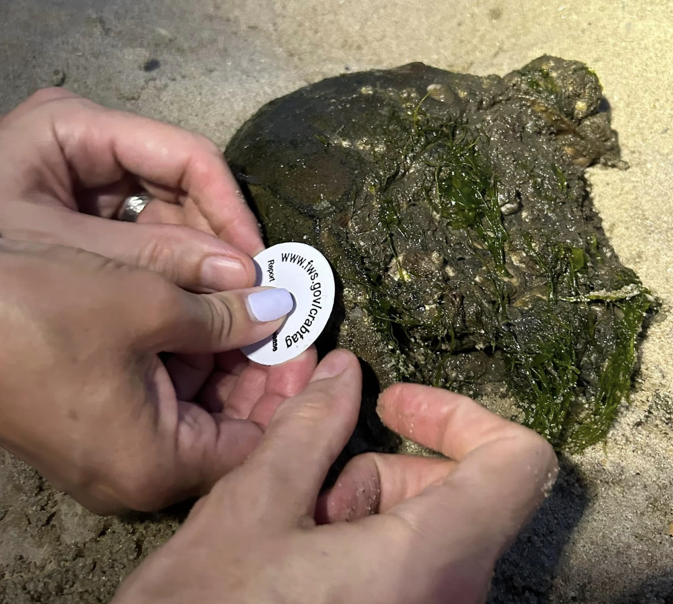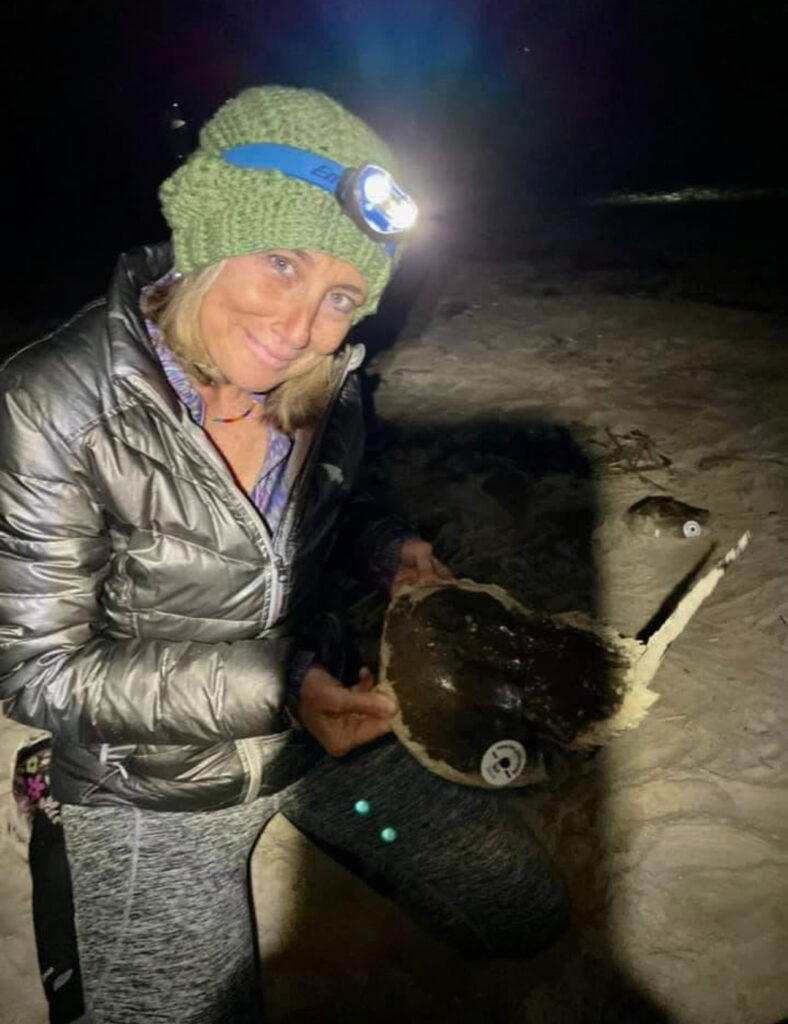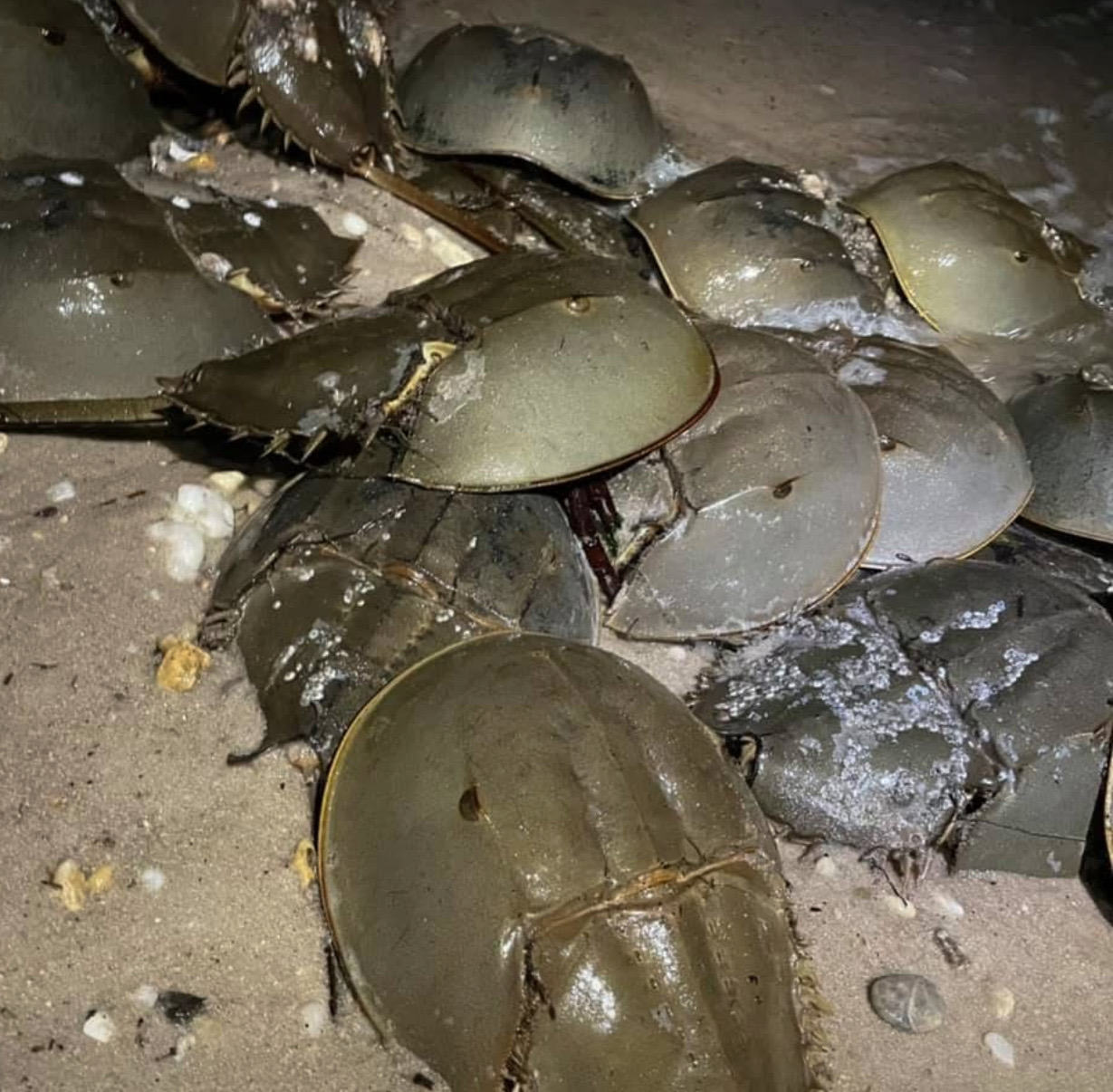My fascination with horseshoe crab tagging began unexpectedly on the shores of Sandy Hook. There, amid the lapping waves, I encountered one of Earth’s living fossils—a prehistoric creature bearing a small tag on its shell. Intrigued, I photographed both the ancient arthropod and its modern identification marker before reporting my find to the U.S. Fish and Wildlife Service.

This chance encounter sparked a passion that led me to enroll in “Green Eggs and Sand,” a specialized course offered by the New Jersey Department of Environmental Protection. What I’ve learned since then has deepened my appreciation for these remarkable creatures, and I’m honored to share this knowledge with fellow wildlife enthusiasts.
More Than Just Ancient Mariners
Horseshoe crabs play a critical ecological role as a primary food source for numerous fish species and migratory shorebirds, including the endangered Red Knot. These birds rely heavily on horseshoe crab eggs for the nutrient-rich fuel they need for their extraordinary migrations.
The medical significance of horseshoe crabs cannot be overstated. Their distinctive blue blood contains Limulus Amebocyte Lysate (LAL), a compound that clumps in the presence of even minute amounts of bacterial toxins. This remarkable property makes horseshoe crab blood invaluable for testing the sterility of vaccines, prosthetics, and intravenous drugs. If you’ve ever received a medical injection, undergone surgery, or been vaccinated, you’ve benefited directly from these creatures.
Perhaps most surprisingly, horseshoe crabs have contributed enormously to our understanding of vision. With their ten eyes and unique visual system, these animals have helped researchers comprehend how our optic nerves respond to light. The accessible eye-brain connection in horseshoe crabs continues to serve as an invaluable research tool for medical scientists studying vision.
The Purpose Behind the Tags
So why do we tag them? During May and June, when horseshoe crabs spawn along New Jersey’s shorelines, researchers tag them to collect vital data for their management and conservation. This tagging allows us to track their movements throughout different seasons and from year to year.

By monitoring their populations, migration patterns, and overall health, we can make more informed decisions about protecting the Delaware Bay ecosystem and ensuring the survival of these living fossils. And yes—despite their common name, horseshoe crabs aren’t actually crabs at all, but arthropods more closely related to spiders and scorpions!

Join the Conservation Effort!
My experiences tagging horseshoe crabs have been among the most rewarding moments in my wildlife photography journey. If you’re interested in learning more about these fascinating creatures or participating in tagging efforts, I highly recommend connecting with the American Littoral Society
Have questions about horseshoe crabs or tagging? Let me know! I’d be delighted to share what I’ve learned! I’d love to hear about your own experiences or answer any questions you might have—drop a comment below and let’s start a conversation. And don’t forget to explore more of my blog posts and animal stories using the navigation arrows below this post. There’s always another adventure waiting to be discovered!
If you're interested in hiring me for a project or you like some images displayed on this page, please feel free to reach out. I know that you may have specific needs, so feel free to ask! Reach out to me!
